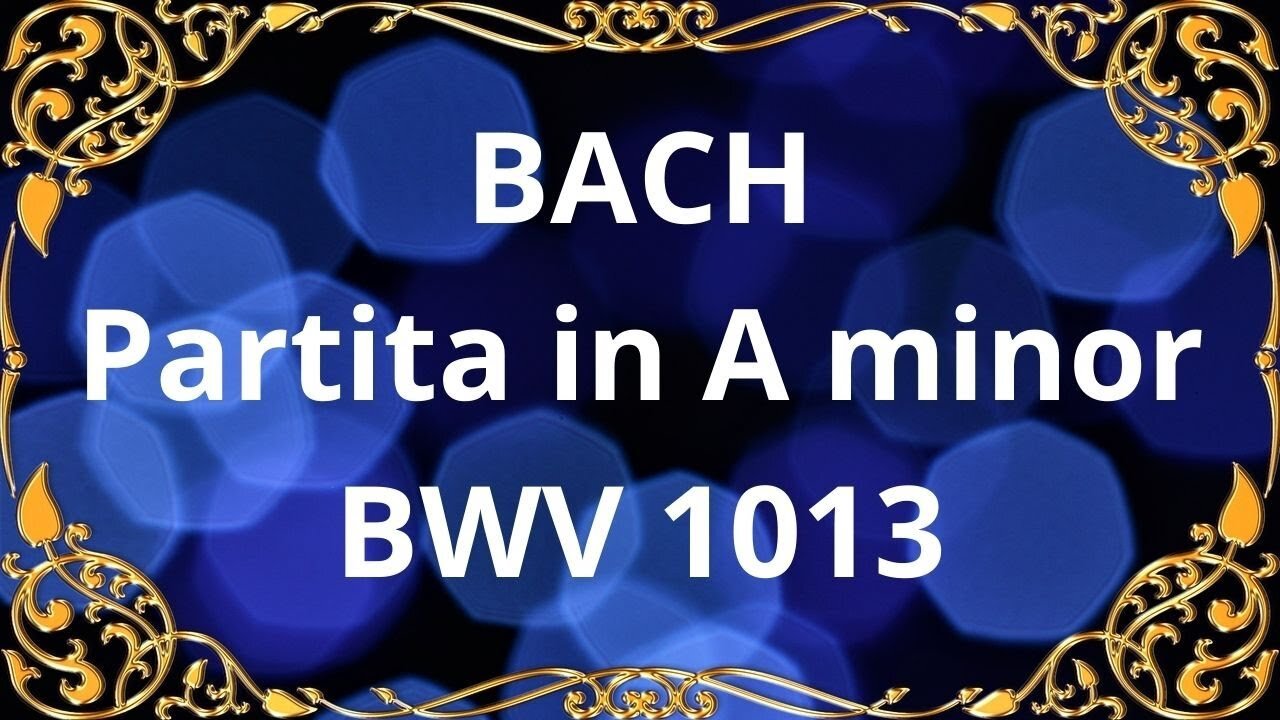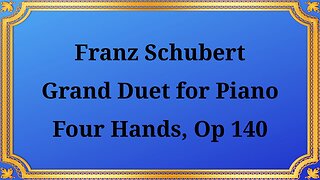Premium Only Content

Bach Partita in A minor, BWV 1013
The world of classical music is adorned with countless masterpieces, but few compositions captivate audiences and musicians alike as profoundly as Johann Sebastian Bach's Partita in A minor, BWV 1013. This virtuosic work, composed for solo flute, showcases Bach's exceptional craftsmanship and musical genius.
Bach composed the Partita in A minor during his tenure as Kapellmeister in Köthen, Germany, around 1717-1723. While the original autograph manuscript has not survived, multiple copies and transcriptions indicate the high esteem in which the work was held. Bach's Partita stands as a testament to the flourishing musical culture of the Baroque era, showcasing the composer's commitment to both technical virtuosity and expressive depth.
The Partita in A minor, BWV 1013, consists of four movements, each characterized by distinct musical elements and emotional nuances:
a) Allemande: This opening movement, marked by its moderate tempo and duple meter, showcases a graceful and intricate dance-like character. Bach's skillful interplay of melodic lines and rich harmonies creates a mesmerizing tapestry of sound.
b) Corrente: Following the Allemande, the Corrente bursts forth with lively energy. This movement is characterized by its quick tempo and triple meter, often filled with rapid scales and elaborate ornamentation. The Corrente displays Bach's mastery of counterpoint and his ability to create dazzling musical textures.
c) Sarabande: The third movement, Sarabande, provides a contrasting moment of reflection and introspection. Its slow tempo and emphasis on expressive melodies create a sense of profound emotional depth. Bach's use of suspensions and harmonic tension adds to the movement's poignancy.
d) Bourrée angloise: Concluding the Partita, the Bourrée angloise injects a spirited, dance-like atmosphere. With its lively rhythms and catchy melodies, this movement demonstrates Bach's ability to combine technical prowess with sheer musical joy.
Bach's Partita in A minor has remained a staple of the flute repertoire for centuries, captivating musicians and audiences with its timeless beauty. Its technical demands, intricate counterpoint, and emotional depth continue to challenge and inspire flutists around the world. Moreover, the Partita's influence extends beyond the flute, with performers and composers from various musical genres drawing inspiration from its melodic motifs and harmonic language.
Johann Sebastian Bach's Partita in A minor, BWV 1013, stands as a testament to the composer's remarkable artistry and enduring musical legacy. This masterpiece showcases Bach's mastery of composition, highlighting his ability to intertwine technical complexity with profound emotional expression. Whether it be the delicate Allemande, the lively Corrente, the introspective Sarabande, or the spirited Bourrée angloise, the Partita continues to enthrall listeners and inspire musicians across generations. Explore the mesmerizing world of Bach's Partita in A minor and experience the timeless allure of this musical treasure.
BACH Partita in A minor, BWV 1013
https://imslp.org/wiki/Special:ReverseLookup/740379
Creative Commons Attribution-ShareAlike 4.0
i. Allemande 00:00
II. Corrente 05:54
III. Sarabande 08:29
IV. Bourrée Anglaise 13:37
#classical_music #Bach #Partita
-
 24:30
24:30
Classical music_Music Inspiration
18 days agoFranz Schubert Grand Duet for Piano Four Hands, Op. 140
551 -
 LIVE
LIVE
The Quartering
3 hours agoWoke Hollywood In Panic Over Diddy, Race Wars Go Nuclear, Scott Pressler Exposed? Fauci Demonic!
30,943 watching -
 2:26:44
2:26:44
SLS - Street League Skateboarding
3 hours ago2025 SLS Miami: Women's and Men's Finals
11.8K15 -
 LIVE
LIVE
Dr Disrespect
4 hours ago🔴LIVE - DR DISRESPECT - TARKOV ALL DAY
2,479 watching -
 LIVE
LIVE
RiftTV/Slightly Offensive
2 hours agoFREE SPEECH VICTORY, Anti-American Bill DEAD ON ARRIVAL | The Rift Report
1,066 watching -
 LIVE
LIVE
The HotSeat
1 hour agoTakes a Redneck to Call Out the Racial Divide While the Govt Feed You Lies
425 watching -

Jeff Ahern
1 hour agoMonday Madness with Jeff Ahern
2.28K1 -
 29:06
29:06
Scary Mysteries
3 hours agoKansas’ Most TERRIFYING Crimes Ever
3.96K1 -
 1:42:36
1:42:36
Russell Brand
3 hours agoYOU WERE WARNED! – MAGA Divided As Hegseth THREATENS WAR With Iran – SF577
135K65 -
 1:20:08
1:20:08
Sean Unpaved
3 hours agoMichigan Missteps, NBA Vets, and Game 7 Hockey Glory
36.4K